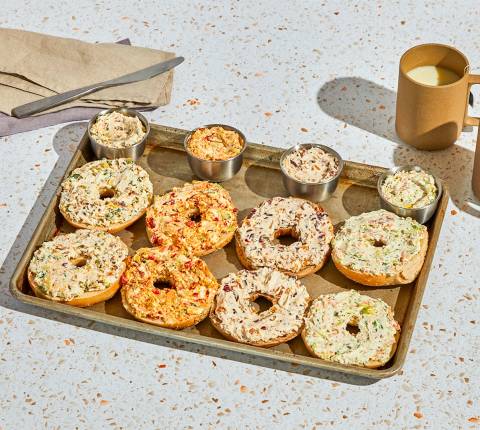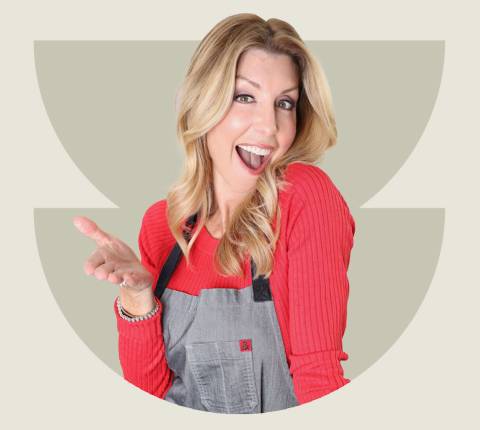Thirteen years ago, I hopped in a rental car with friends and traced the coastline north from Barcelona to a tiny town called Roses, home to the famed El Bulli restaurant.
For seven hours we dined on a parade of outlandish dishes: a sandwich of Marcona almonds and pumpkinseed oil, served on a baguette made of what tasted and felt like styrofoam; tiny rabbit offal presented on an endive leaf; white chocolate molded into the size and shape of an ostrich egg; potted plants, wheeled by and cut delicately into a steaming cup of water for tea service.
When I think back on the most important meals of my life, El Bulli, which closed in 2011, was up there, though it was hardly the most delicious. These days, though, when I go out to dinner, I’m craving something less rococo. With Rene Redzepi’s recent news that in 2024 he’ll be closing his Copenhagen darling, Noma (which, like El Bulli did, has three Michelin stars), and converting it into a test kitchen, it became clear that I’m not alone. (The 2022 satirical film “The Menu” suggested the same.) So what gives?

“Of course, I appreciate fine dining restaurants, and I appreciate all that goes into it, whether it’s the wine, the bev, or the food, but it’s just not approachable for a lot of people,” says Calvin Eng, chef-owner of Bonnie’s, a Cantonese-American restaurant in Williamsburg, Brooklyn. His restaurant, he says, is populated by his friends and family the majority of the time: “And friends and fam aren’t going to eat at a Michelin-starred restaurant on the regular.”
According to an October 2022 study conducted by Popmenu, people do want to be eating out on the regular again, just perhaps not at the Nomas or El Bullis or Eleven Madison Parks: 58 percent of U.S. consumers are now dining out more often and cite convenience as their primary motivator. (Takeout is on the rise, too, with 69% of respondents ordering in as often or more often than last year.) This rise in restaurant dining may be the result of what some have identified as pandemic-related “cooking fatigue.”
That means, Eng says, the most popular new mood of dining is different than it was a number of years ago. Bonnie’s, which opened in 2021, has been a massive success from the start, a place where regulars established themselves early. Guests are just as likely to encounter a playful take on cacio e pepe, enriched with fermented bean curd, as they are Eng’s iconic fast-food-inflected cha siu McRib: Its steamed pork ribs, bread-and-butter pickles, Cantonese cha siu glaze, and Chinese hot mustard atop a milk bread bun combines cultural touchstones from McDonald’s with a more global influence.
“I want to just serve things that are unique and different and something that you can’t get elsewhere,” Eng says, adding, “and something that you’re probably not going to make at home.” Communal, fast-paced, easy-to-love food — not overly precious, overly long dining experiences — is what fits the current moment.

At Chicago’s Small Cheval, which has numerous popular locations and continues to expand (the most recent outpost opened in 2022), a signature double-cheeseburger, topped with Dijonnaise, pickles, and onions, with a side of perfectly crisp golden skinny fries, is the pinnacle of exceptional casual dining. The brand’s skyrocketing popularity speaks to what consumers want: more than a national-chain burger, perhaps, but less than a multi-course tasting menu.
There are many more examples of restaurants around the country demonstrating nationwide enthusiasm for less fussiness. In Los Angeles, Hermanito, which opened in March 2020, marries Sonoran-style tacos with Japanese flavors, and adoring patrons have made it a neighborhood favorite. Celeste, the casual Peruvian restaurant that opened in Somerville, Massachusetts, in 2018, is such a hit that the owners expanded their reach with a second restaurant, La Royal in Cambridge, in 2022.
For Vivian Howard, the chef and co-owner of Chef & the Farmer in Kinston, North Carolina, which opened in 2006 and will re-open this year with a new concept, the current moment of dining is in flux. “Pre-pandemic, we were all just dining out, frenzied,” she says. “It was our theater, it was the way that people entertained ourselves.” When people returned to dining after a hiatus, she says, it was much harder to match their elevated expectations. “People were left kind of wanting something more, both in the dining room and on the other side,” she says.”

While Eng feels that casual dining draws guests who want a refreshing experience, Howard finds herself circling back to the word "comfort," a term rarely used in the upper echelon of Michelin three-stars. Well-executed and delicious foods that bring comfort (whether in the form of a pizza or barbecue or something else that sheds the pretense of a more formal presentation) appear to be drawing people in.
Which is not to say that fine dining is dead, according to Eng. Each experience has its merits. “I think there’s a place for …all those types of establishments to exist, especially in a big city,” he says. And yet, what seems to have captured the current zeitgeist is an experience in which guests can gather informally with friends over dishes they love and crave for short, informal meals that are familiar but still surprising and joyful.
In some far-off future, in celebration of a birthday or graduation or wedding, I may hop a plane once more, in search of a special, exclusive dining experience. But for right now, I’m compelled to agree with Eng, Howard, and the millions of American diners who are tacking toward something less elaborate. To eat — perchance, to dine — is to indulge in that giddy, delicious fascination with feasting festively, easily, and in a way that does not take itself too seriously.
PHOTO CREDITS:
Bonnie’s by Adam Friedlander






